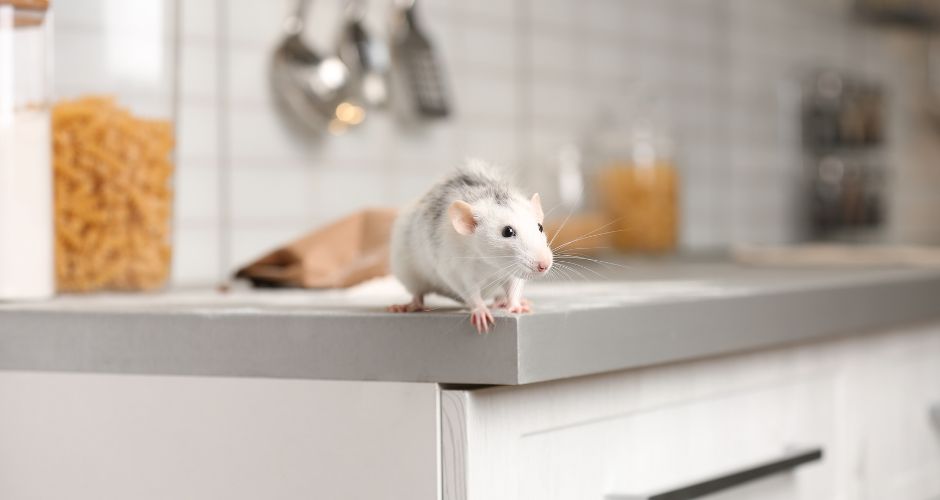Hidden Allergy Triggers in your Home

Have you ever paused to consider the air you breathe within the confines of your own home? It’s a sanctuary, a place of comfort, and yet, there might be unseen intruders compromising the very air you depend on for life. In this blog series, we embark on a journey of revelation – diving into the depths of our living spaces to uncover the hidden allergy triggers that often escape the naked eye.
From the cosy corners of our bedrooms to the bustling activity hubs like the kitchen, our homes are teeming with potential allergens that can impact our health. So, what’s really lingering in the shadows of your home, triggering those unexpected sneezes or unexplained sniffles?
Join us as we unravel the mystery and answer the questions you may not have known to ask. Together, let’s navigate the uncharted territories of hidden allergens, armed with insights, solutions, and a commitment to transforming our homes into havens of pure, allergen-free air.
It’s time to ask the questions, seek the answers, and create a living space that truly promotes not just comfort but the very essence of well-being. Welcome to the revelation – welcome to a home free from hidden allergy triggers!
Dust Mites

Have you ever considered the seemingly innocuous dust accumulating on your shelves, carpets, and bedding? It’s not just an accumulation of dirt; it’s an intricate ecosystem hosting an army of dust mites. These minuscule arachnids, invisible to the naked eye, feed on the skin cells we shed daily.
Dust Mite Allergies
For some, the presence of dust mites can be harmless. However, for others, it can lead to allergic reactions. The proteins present in dust mite faeces and body parts can trigger symptoms such as sneezing, coughing, nasal congestion, and skin irritations, particularly in those with sensitivities.
Common Dust Mite Haunts
Dust mites aren’t elusive creatures – they thrive in environments rich in warmth, humidity, and the skin cells we naturally shed. Bedrooms, especially mattresses, pillows, and bedding, are prime habitats. Carpets, upholstered furniture, and curtains also provide favourable conditions for these microscopic pests.
How to Combat Dust Mite Allergens
Fear not. Armed with knowledge, you can take proactive steps to minimize dust mite presence. From investing in allergen-proof bedding and regular washing routines to maintaining optimal humidity levels, there are practical measures you can implement to create an environment less welcoming to these unwanted guests.
Indoor Plants

Indoor plants offer numerous benefits, including improved air quality, stress reduction, and an undeniable enhancement of our surroundings. But could there be a downside to this green delight?
Allergens Hiding in Plant Life
Beyond their visual appeal, indoor plants can sometimes harbour allergens that contribute to respiratory discomfort. Pollen, mould spores, and even tiny insects can find refuge among the leaves and soil. For those with allergies or sensitivities, this hidden aspect of indoor plants might pose unexpected challenges.
Common Indoor Plants and Potential Allergens
Certain plant species are more likely to trigger allergic reactions than others. Popular indoor plants, such as ficus, palms, and ferns, and shed light on the allergens they may carry. Understanding the potential risks allows us to make informed choices about the green companions we welcome into our homes.
Tips for Allergy-Friendly Indoor Plant Care
Fear not, plant enthusiasts! There are practical steps you can take to enjoy the benefits of indoor plants while minimizing potential allergens. From strategic plant placement to proper watering techniques, we’ll share tips for cultivating an indoor garden that aligns with both your aesthetic and health goals.
Furry Friends

From the playful antics of a dog to the gentle purring of a cat, our furry friends bring immeasurable joy and companionship. Yet, the very creatures we cherish may unknowingly introduce allergens that impact our respiratory health.
Pet Allergens Unveiled: Understanding the Culprits
While pet fur is a common allergen, the true culprits lie in proteins found in pet saliva, dander (tiny skin flakes), and urine. These microscopic particles can become airborne, settle on surfaces, and linger in the air, posing challenges for those with pet allergies or sensitivities.
Common Pet Allergens: Dogs, Cats, and Beyond
Join us as we explore the allergenic potential of common household pets. Whether you share your home with a dog, a cat, or smaller furry companions like hamsters or rabbits, understanding the unique allergens associated with each can empower you to create a harmonious living environment.
Managing Pet Allergies
Discover practical strategies for minimizing pet-related allergens while continuing to enjoy the company of your furry friends. From grooming routines to designated pet-free zones, we’ll share insights to help you strike a balance between a pet-friendly home and a healthy living space.
Air Duct Dust

Beyond temperature regulation and air circulation, these ducts can become breeding grounds for allergens such as dust, mould, and even pet dander. The very system designed to provide comfort might inadvertently be distributing unseen allergens throughout your living space.
Dust and Allergens
Dust particles, a common household allergen, can accumulate within air ducts over time. When the HVAC system is in operation, these particles are circulated into the air you breathe. Additionally, the dark and often damp environment of ducts can create an ideal breeding ground for mould, further contributing to indoor air quality issues.
Symptoms of Contaminated Ducts
Understanding the potential signs of contaminated air ducts is crucial. If you or your family members experience unexplained allergies or respiratory issues or notice a persistent musty odour, it might be indicative of allergen accumulation within the ductwork.
Maintaining Clean and Healthy Air Ducts
Fear not, for there are practical steps you can take to minimize air duct dangers. From regular professional duct cleaning to ensuring proper ventilation, we’ll explore preventive measures to keep your HVAC system running efficiently while minimizing allergen distribution.
DIY Duct Maintenance
While professional duct cleaning is recommended periodically, there are also DIY measures you can undertake to maintain cleaner air ducts. From changing air filters regularly to sealing any leaks in the ductwork, these practices contribute to a healthier indoor environment.
Household Pests

Common household pests, ranging from tiny insects to larger rodents, can be significant contributors to hidden allergens. Ants, cockroaches, dust mites, and rodents are among the frequent offenders, impacting the air you breathe and your overall well-being.
Cockroaches and Their Allergenic Residue
Beyond their unsightly appearance, cockroaches can leave behind allergenic proteins in their droppings and saliva. These particles become airborne, contributing to respiratory problems and allergic reactions. Learn how to address and prevent cockroach infestations to maintain a healthier indoor environment.
Rodents: More Than Just Unwanted Guests
Mice and rats, while often unwelcome visitors, also bring allergenic challenges. Proteins found in rodent urine, saliva, and dander can become airborne and lead to allergic symptoms. Explore strategies for preventing and managing rodent infestations to safeguard your home from these hidden allergens.
Pet Allergens: Beyond Fur and Feathers
While pets are beloved members of the family, their presence can introduce allergens such as pet dander and saliva. These microscopic particles can trigger allergic reactions, especially in individuals with sensitivities. Discover methods for managing pet allergens while maintaining a harmonious coexistence with your furry companions.
Effective Pest Prevention: Securing Your Home
Prevention is key to managing household pests and their allergenic impact. From sealing entry points to maintaining cleanliness, adopt effective strategies to prevent infestations and minimize the presence of allergenic particles in your home.
Arming yourself with knowledge about these hidden allergy triggers is the first step toward creating a healthier home environment.






